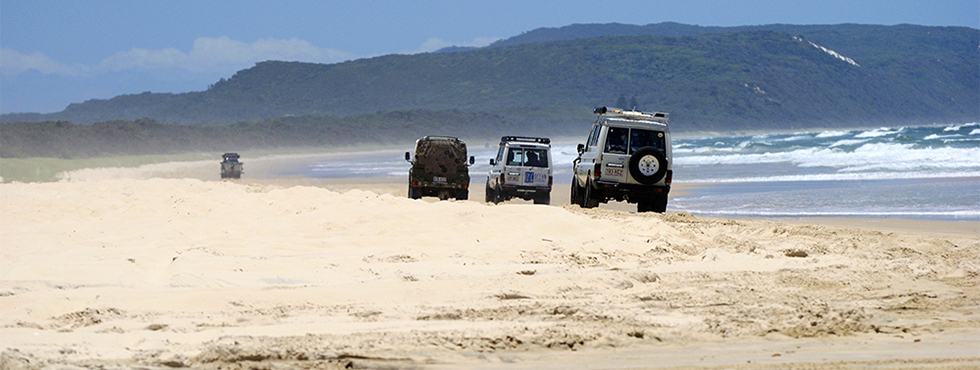Tim’s Travel Tips – Australia’s Coastline
Tim, COTA Insurances’ Insurance Manager, offers his travel tips on travelling Australia’s coastline by car.

For those who like their travel a bit closer to home and perhaps a bit more adventurous, this instalment I’ve got some Australian Beach 4WD tips.
With over 25,000 km’s of coastline it’s no surprise that there are a wide range of amazing beaches that you can drive on in Australia. There are also a wide range of types of beach drives so there is something for everyone; from getting to remote locations for the amazing views, cruising through sand dunes for the adventure to beach driving to a fantastic spot well away from the crowds.
It’s important to keep in mind that road rules, including speed limits, do apply on beaches and most beach drives are for 4WD vehicles only.
You may need permits to access some beach drives so make sure you plan ahead. Speaking of planning ahead, remember to check tide charts before you travel and avoid the hours either side of high tide. And as with all 4WDing, it’s always best to travel with at least one other vehicle.
Don’t get bogged down
Beach driving of any kind will involve driving on sand, often soft sand, which is very different from driving on the road. Getting bogged is also a real risk, so here are some tips to help you make the most of your time at the beach:
The two key elements for diving on sand are tyre pressure and momentum
Set your tyre pressure for the conditions
As a rule of thumb, lower your tyre pressure to 20 psi – you may need to go lower depending on the conditions such as very soft sand or becoming bogged
When you’re finished on the beach make sure you re-inflate your tyres to the normal pressure – so make sure to carry a tyre pressure gauge and portable air compressor
Use momentum to help you get through soft sand, avoid making sharp turns and don’t stop until you get back to hard sand
If (when) you get bogged – immediately stop spinning your wheels because you will just sink further making recovery more difficult
Essential recovery gear for beach driving includes vehicle recovery tracks, snatch straps and a long-handled shovel
Fit a safety sand flag (a tall fluorescent flag that you mount on the front of your car) if travelling over dunes in order to help alert other vehicles of your presence
Once you are back home after your day at the beach, remember to give your 4WD (including the underbody) a good wash to prevent rust from the salt and sand.
Make sure you check your insurer before you go off road.
Some trips to give you inspiration
Queensland’s Great Beach Drive
www.queensland.com/en-au/journey/great-beach-drive
Beachport to Robe, SA
www.robe.com.au and www.limestone-coast-4wd-explorers-guide.pdf
Stockton Beach, NSW
www.portstephens.org.au
Ocean Beach, TAS
www.parks.tas.gov.au
Lancelin, WA
www.lancelin.com.au
Have a question or your own travel tips to share?
Email Tim at [email protected] or post to Tim’s Travel Tips, PO BOX 7156, HUTT STREET SA 5000.
Insurance and Membership Services Limited ABN 59 057 159 743, AR No 246235 trading as COTA Insurance, is an authorised representative of nib Travel Services Pty Limited ABN 81 115 932 173, AFS Licence No. 308461 and only provides general advice which means you should consider if it is suitable for your needs. Before deciding to purchase the product, please read the Product Disclosure Statement available at cota.we.com.au/. This insurance is underwritten by XL Insurance company SE, Australia branch (ABN 36 083 570 441).
